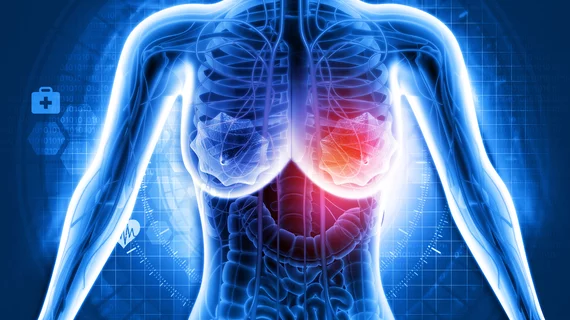Survey explores radiology practices’ surveillance preferences when monitoring breast cancer survivors
About 73% of radiology practices recommend diagnostic mammography surveillance after breast-conserving surgery in cancer survivors, according to new survey results published Wednesday.
Duration of such surveillance ranged anywhere from six months to five years before returning to regular screening mammograms, with most advocating for a two- to three-year range. Since 2009, the National Comprehensive Cancer Network has recommended “annual mammography” for patients with breast cancer following surgery. However, there is “immense variability” in how this is handled in clinical practice, with a lack of evidence-based literature on the type of mammography to use and for how long.
Johns Hopkins experts set out to survey members of the field, publishing their results Nov. 17 in the Journal of the American College of Radiology.
“This variability could negatively affect patient mortality. Furthermore, the differences in out-of-pocket costs between screening and DM may result in reducing patient follow-up adherence in the setting of socioeconomic disparities,” corresponding author Emily Ambinder, MD, assistant chief of breast imaging at the Baltimore-based institution, and colleagues wrote. “Understanding the variable patterns among practice surveillance protocols could reduce confusion and allow improvement in the quality of surveillance care for patients with breast cancer and is therefore relevant.”
Ambinder et al. sent their five-question survey to breast imaging experts in December 2020, garnering 381 answers for a 16% response rate. Much smaller proportions of respondents recommended immediately returning to screening mammography after surgery (8%) or advocated for indefinite diagnostic imaging (5%). Referring clinician (64%) and radiologist preferences (51%) were the two most common reasons why practices selected their surveillance protocols. Those who recommended immediately returning to screening mammography also cited financial benefit for the patient and published literature in supporting their decision.
“Our findings demonstrate that the surveillance imaging protocols used by breast imaging practices are highly dependent and influenced by referring clinicians,” the authors advised. “Therefore, collaboration between referring clinicians and radiologists may be warranted to establish more standardized surveillance imaging guidelines moving forward. Decreasing variability between practices could reduce confusion for clinicians, radiologists and, most important, patients.”
Read more about their findings in JACR here.

